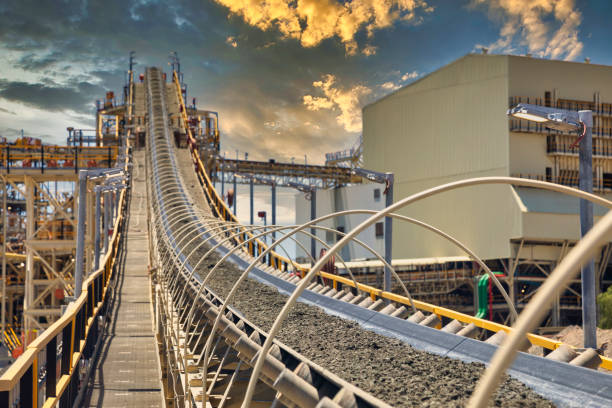
1. The fixed conveyor should be installed on a fixed basis according to the prescribed installation method. Before the mobile conveyor is officially put into operation, the wheels should be wedged with a triangle or braked. In order to avoid walking around in the work, when there are multiple conveyors operating in parallel, there should be a one-meter passage between the machines and between the machines and the walls.
2. Before the conveyor is used, it is necessary to check whether the running parts, belt buckles and bearing devices are normal, and whether the protective equipment is complete. The tension of the tape must be adjusted to the appropriate level before starting.
3. The belt conveyor should be started without load. Wait for normal operation before feeding. It is forbidden to enter the material first and then drive.
4. When there are several conveyors running in series, they should start from the unloading end and start in sequence. After all the normal operation, the material can be fed.
5. When the belt deviates during operation, it should be stopped for adjustment and should not be used reluctantly, so as not to wear the edge and increase the load.
6. The temperature of the working environment and the materials to be sent shall not be higher than 50 °C and lower than -10 °C. Materials with acidic and alkaline oils and organic solvents shall not be conveyed.
7. Pedestrians or passengers are prohibited on the conveyor belt.
8. Before stopping, the feeding must be stopped, and the parking can only be stopped when the material on the belt is unloaded.
9. The conveyor motor must be well insulated. Do not pull and drag the mobile conveyor cable. The motor should be reliably grounded.
10. It is strictly forbidden to pull the belt with your hands when the belt is slipping, so as to avoid accidents.

(1) After the installation of each equipment, the conveyor is carefully debugged to meet the requirements of the drawing.
(2) Each reducer and moving parts are filled with corresponding lubricating oil.
(3) After the installation of the conveyor meets the requirements, each single equipment is manually tested and combined with the conveyor to meet the requirements of the action.
(4) Debugging the electrical part of the conveyor. Including the debugging of conventional electrical wiring and action, so that the equipment has good performance and achieves the designed function and state.
Belt mistracking is one of the most common failures when belt conveyors are running. There are many reasons for mistracking, the main ones being low installation accuracy and poor daily maintenance. During the installation process, the head and tail rollers and the intermediate idler should be on the same center line as far as possible and parallel to each other to ensure that the conveyor belt is not biased or less biased. In addition, the strap joints should be correct and the circumference on both sides should be the same.
In the process of use, if there is deviation, the following checks should be made to determine the cause and make adjustments. The parts and treatment methods that are often checked when the conveyor belt deviates are:
(1) Check the non-coincidence between the transverse centerline of the roller and the longitudinal centerline of the belt conveyor. If the coincidence value does not exceed 3mm, it should be adjusted by using the long mounting holes on both sides of the idler set. The specific method is which side of the conveyor belt is deflected, which side of the idler group moves forward in the direction of the conveyor belt, or the other side moves back.
(2) Check the deviation value of the two planes of the head and tail frame mounting bearing seats. If the deviation of the two planes is greater than 1mm, the two planes should be adjusted in the same plane. The adjustment method of the head drum is: if the conveyor belt deviates to the right side of the drum, the bearing seat on the right side of the drum should move forward or the left bearing seat move backward; If the conveyor belt deviates to the left side of the pulley, the housing on the left side of the pulley should be moved forward or the right housing should be moved backward. The tail drum is adjusted in the opposite way to the head roller.
(3) Check the position of the material on the conveyor belt. Material that is not centered on the conveyor belt cross-section will cause the conveyor belt to deviate.
If the material is biased to the right, the belt is deviated to the left and vice versa. When using, the material should be centered as much as possible. In order to reduce or avoid such belt mistracking, a baffle plate can be added to change the direction and position of the material.
TradeManager
Skype
VKontakte